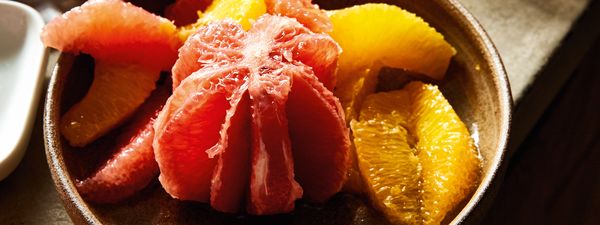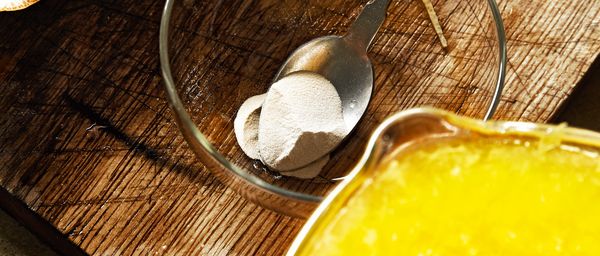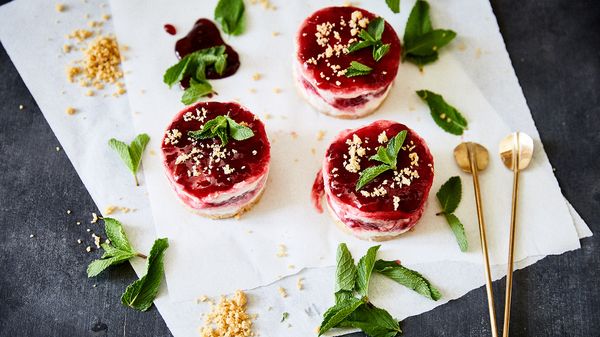
IF YOU’RE MAKING A SWEET FRUIT SAUCE, YOU NEED A BINDING AGENT THAT DOESN’T ALTER THE FLAVOUR. AGAR-AGAR IS EASY TO USE – AND DOESN’T DENATURE VITAMINS.
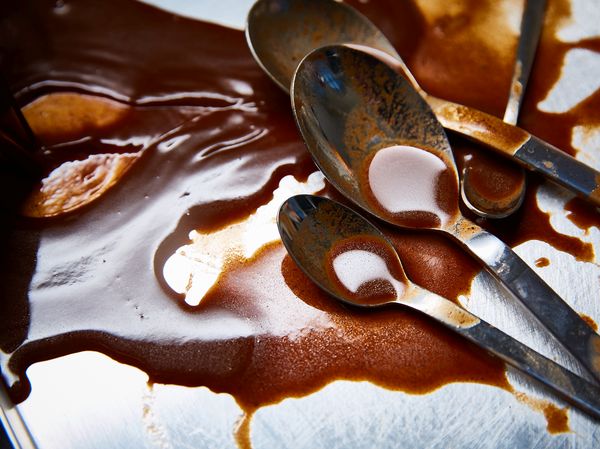
How it works
It goes with ice cream, crêpes, or pudding and dumplings - wherever it’s served, a good fruit sauce is guaranteed to get plaudits. The quickest way to make one is simply to puree berries and, et voilà, it’s a fruit sauce. If you want to make one out of citrus fruits, apples, or pears, however, you’ll need to work differently in order to get a thick, smooth sauce. The best way of doing it is to use agar-agar, a plant-based thickening agent made from dried algae. As well as being wholly flavourless and able to bind liquids in a matter of minutes, agar-agar also has the distinct advantage of not needing to be heated for an extended period of time; this means that aromas, vitamins, and a range of secondary phytochemicals in the juice of the fruit are not denatured.
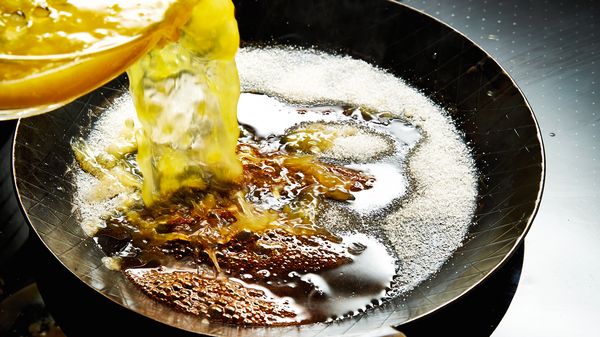
Step 1
To make a citrus fruit sauce, squeeze the juice out of lemons, limes, or oranges and then mix it with agar-agar and the amount of water specified on the packaging.
Next, heat sugar in a saucepan until it caramelises, making sure that it doesn’t darken too much (this will make it bitter).
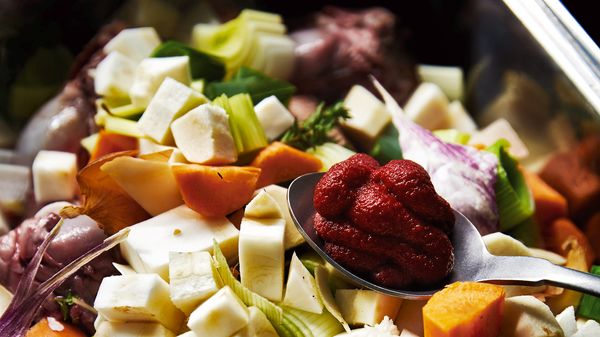
Step 2
Once the caramel has taken on a light golden hue, add the prepared juice mixture and stir vigorously. As soon as the juice has thickened, you can remove the saucepan from the heat and add other flavours as desired: liqueurs, vanilla seeds, cinnamon, zest, or even a pinch of ground dried chilli peppers from a pestle and mortar.
